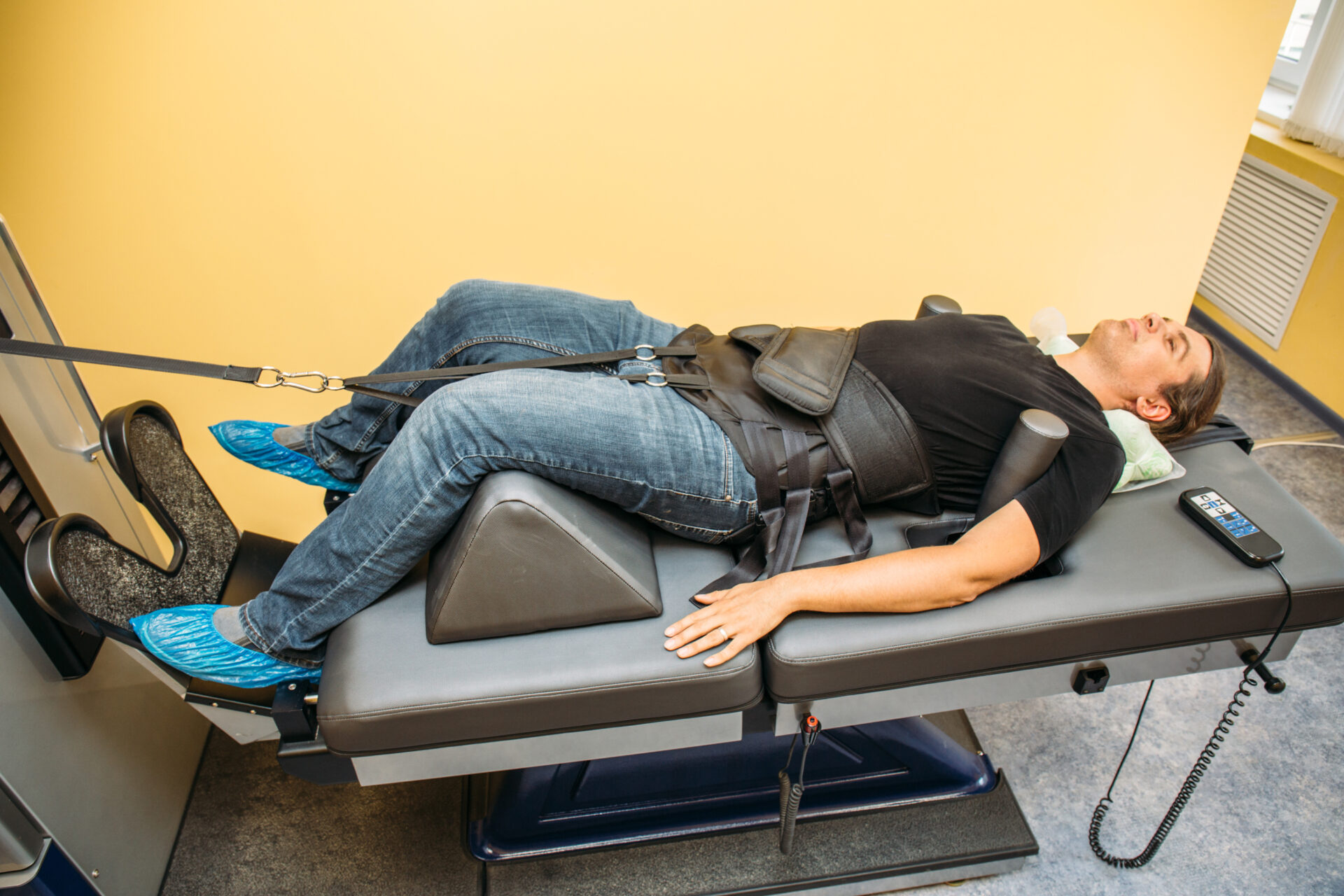This post may contain affiliate links, which means if you enroll through my link, I’ll receive a small commission at no extra cost to you.

Hyperbaric Oxygen Therapy (HBOT) is a medical treatment that involves breathing pure oxygen in a pressurized chamber, which is used to help promote healing and recovery in various medical conditions. If you don’t have insurance receiving such treatment might seem impossible to afford. While the cost of HBOT can vary depending on several factors, understanding the general pricing without insurance coverage can provide valuable insights for those considering this treatment option.
The cost of Hyperbaric Oxygen Therapy without insurance can range from $250 to $2,500 per session. The overall cost of the treatment can also vary depending on the number of sessions required. Therefore, the total expense for HBOT without insurance can be anywhere between $5,000 and $150,000.
By delving deeper into the topic, readers will gain a comprehensive understanding of the factors that influence the cost of HBOT, such as geographical location, treatment facility, and specific medical conditions. Furthermore, this article will explore potential alternatives for individuals who are unable to afford the therapy without insurance coverage.

Understanding the Cost Factors
To start off, it is important to understand the various cost factors that can affect the overall expense of Hyperbaric Oxygen Therapy (HBOT). These cost factors include insurance coverage, geographical location, facility type, equipment and chamber types, treatment duration, and additional services. Insurance coverage plays a significant role in determining out-of-pocket expenses for individuals undergoing HBOT.
Geographical variations can also impact the cost, as treatment facilities in major cities or regions with higher costs of living tend to have higher pricing. The type of facility, such as hospital-based or independent clinics, can also influence costs, with hospital-based facilities often having higher expenses due to administrative and overhead costs.
The equipment and chamber types used during HBOT can vary, and advanced technology and features can come with a higher price tag. The number of sessions required for treatment and the overall treatment duration can also affect the cost, as well as any additional services or personalized treatment plans. By understanding these cost factors, individuals can better evaluate and plan for the financial aspects of HBOT.
Geographical Variations: How Location Affects Pricing
The cost of Hyperbaric Oxygen Therapy (HBOT) can vary significantly based on the location of the treatment facility. Major cities or regions with higher costs of living often have higher treatment expenses. This is primarily due to factors such as rent, overhead costs, and regional healthcare pricing disparities. For example, HBOT sessions in urban areas like New York City or San Francisco may be more expensive compared to rural locations due to the higher cost of operating a facility in these areas. It is important to consider the geographical location when estimating the cost of HBOT.
Facility Type: Hospital-Based vs. Independent Clinics
The type of facility offering HBOT can also influence the pricing. Hospital-based facilities tend to have higher costs due to additional administrative expenses, overhead, and staffing requirements. These facilities may be part of larger medical institutions, and their pricing structure may reflect the higher overall expenses associated with hospital settings. On the other hand, independent clinics or specialized HBOT centers may offer more competitive pricing as they have more flexibility in terms of costs. Independent clinics can streamline their operations and focus solely on providing HBOT services, potentially reducing overhead expenses and passing on the cost savings to patients. When comparing costs, it is crucial to consider the reputation and accreditation of the facility to ensure quality care and safety standards are met.
Equipment and Chamber Types: Impact on Pricing
The cost of the equipment and type of chamber used during HBOT can affect the overall pricing of the treatment. Advanced hyperbaric chambers with sophisticated features and capabilities may come with a higher price tag. These chambers are designed to provide precise pressure control, advanced monitoring systems, and enhanced patient comfort. Providers who invest in state-of-the-art technology and maintain updated equipment might charge more for their services. The quality of the chamber and the technology it employs can impact the treatment experience and outcomes, but it is important to assess whether the added features justify the additional cost when considering HBOT options.
Treatment Duration: Number of Sessions and Overall Cost
The number of HBOT sessions required for an individual’s treatment plan can significantly impact the overall cost. The treatment duration varies depending on the medical condition being treated, the severity of the condition, and the individual’s response to HBOT. Some medical conditions may only require a few sessions, while others may necessitate multiple sessions over an extended period. Understanding the treatment duration and its correlation with the cost is crucial for financial planning. Providers may offer package deals or discounted rates for a predetermined number of sessions, which can help reduce the overall cost. However, it is important to consult with healthcare professionals to determine the optimal number of sessions required for your specific condition and discuss any cost-saving options available.
By considering geographical variations, facility types, equipment and chamber types, as well as treatment duration, individuals can gain a more comprehensive understanding of the factors influencing the cost of HBOT. This knowledge allows patients to make informed decisions, compare pricing options, and plan for the financial aspects of their HBOT treatment.

The Range of Expenses
To start off, let’s delve into the cost factors that can affect the overall expense of Hyperbaric Oxygen Therapy (HBOT) in more detail. One crucial aspect is the session costs. The price per HBOT session can range from $250 to $2,500, depending on various factors. These factors include the geographical location, facility type, equipment and chamber types, treatment duration, and additional services provided.
The geographical location plays a significant role in determining the cost of HBOT sessions. Major cities or regions with higher costs of living often have higher treatment expenses. This is primarily due to factors such as rent, overhead costs, and regional healthcare pricing disparities. For example, HBOT sessions in urban areas like New York City or Los Angeles may be more expensive compared to rural locations due to the higher cost of operating a facility in these areas.
The type of facility offering HBOT can also influence the pricing. Hospital-based facilities, being part of larger medical institutions, tend to have higher costs due to additional administrative expenses, overhead, and staffing requirements. On the other hand, independent clinics or specialized HBOT centers may offer more competitive pricing as they have more flexibility in terms of costs. It is important to consider the reputation and accreditation of the facility when comparing costs, as quality care and safety standards should not be compromised.
Another factor to consider is the equipment and chamber types used during HBOT. The cost of the equipment can vary, and advanced hyperbaric chambers with sophisticated features may come with a higher price tag. Providers who invest in state-of-the-art technology and maintain updated equipment might charge more for their services. However, it is essential to assess whether the added features justify the additional cost when considering HBOT options.
The treatment duration and the number of sessions required can significantly impact the overall cost of HBOT. The specific medical condition being treated, its severity, and the individual’s response to HBOT determine the treatment duration. Some medical conditions may only require a few sessions, while others may necessitate multiple sessions over an extended period. It is important to consult with healthcare professionals to determine the optimal number of sessions required for your specific condition. Providers may offer package deals or discounted rates for a predetermined number of sessions, which can help reduce the overall cost.
In addition to the session costs, patients may encounter additional expenses such as initial consultations, medical assessments, and equipment fees. These costs can vary depending on the provider and the specific requirements of each patient’s case. It is advisable to inquire about these potential additional charges during the initial consultation to have a comprehensive understanding of the total cost involved.
Fortunately, some HBOT providers offer package deals or discounts for multiple sessions, which can help individuals save on the overall cost. Exploring these options and discussing them with the provider can provide opportunities for potential savings. It is important to consider the long-term treatment plan and evaluate whether these package deals align with the recommended treatment duration.
For individuals unable to afford the upfront cost of HBOT, various financing options may be available. Some providers offer flexible payment plans, allowing patients to spread out the cost over a specified period. Additionally, there are financial institutions that specialize in medical loans and can provide assistance specifically for medical treatments like HBOT. Researching these financing options and discussing them with the provider can help make HBOT more accessible to individuals who may need financial assistance.
In conclusion, the cost of HBOT is influenced by several factors, including session costs, additional expenses, package deals and discounts, and financing options. Understanding these factors and conducting thorough research can help individuals make informed decisions and plan for the financial aspects of HBOT. By exploring different providers, comparing prices, and considering potential savings opportunities, individuals can prioritize their health while managing the financial aspects effectively.

Exploring Affordable Alternatives
There are several ways to get the prices down for Hyperbaric Oxygen Therapy.
Clinical Trials and Research Studies: Accessing Treatment at Lower Costs
Participating in clinical trials or research studies can provide an alternative avenue for accessing HBOT at a reduced cost or even for free. Clinical trials and research studies are designed to gather data on the effectiveness of HBOT for specific medical conditions, and individuals who meet the study criteria may benefit from subsidized or no-cost treatment.
Clinical trials are carefully conducted research studies that evaluate the safety and efficacy of new treatments or interventions. They often involve a controlled environment where patients receive HBOT under close medical supervision. By participating in a clinical trial, individuals can gain access to HBOT at a lower cost, while also contributing to scientific advancements in the field.
To find relevant clinical trials or research studies, individuals can explore resources such as clinical trial registries, research institutions, and medical centers that specialize in HBOT. Consulting with healthcare professionals knowledgeable in HBOT can also provide insights into ongoing trials or studies that may be suitable for participation.
It is important to note that clinical trials have specific eligibility criteria, and participants must meet certain requirements to be included. These criteria may include factors such as age, gender, medical condition, and previous treatment history. Individuals interested in participating in a clinical trial should carefully review the inclusion and exclusion criteria to determine their eligibility.
Non-Profit Organizations and Grants: Financial Assistance Programs
Certain non-profit organizations and foundations offer financial assistance programs specifically aimed at supporting individuals seeking medical treatments like HBOT. These programs can help alleviate the financial burden associated with HBOT and make it more accessible for those in need.
These non-profit organizations often provide grants or financial assistance based on predetermined criteria, which can include factors such as financial need, medical condition, or other qualifying circumstances. Exploring resources such as disease-specific foundations, patient advocacy organizations, and local community support groups can provide information on available grants and financial assistance programs.
To apply for these grants or financial assistance, individuals typically need to complete an application process that may involve providing personal and medical information, supporting documentation, and a statement of need. It is important to thoroughly review the requirements and deadlines for each program and submit the application well in advance.
Additionally, reaching out to local community organizations, religious institutions, or charitable foundations may uncover additional sources of financial aid. These organizations may have resources or funds earmarked for medical treatments, and they may be willing to provide financial assistance to individuals seeking HBOT.
By exploring insurance coverage, clinical trials, and non-profit organizations, individuals can gain a comprehensive understanding of the financial assistance options available for HBOT. Navigating these avenues requires thorough research, proactive communication with healthcare professionals, and persistence in seeking out the resources and support needed to make HBOT more affordable.
Health shares are not insurance and do not offer insurance coverage. Membership in a health share does not guarantee the payment or reimbursement of medical expenses. Each organization operates under its own membership guidelines, which determine what expenses may be eligible for sharing. This publication is for informational purposes only and is not provided by an insurance company. For state-specific notices and full program details, please visit the respective health share’s official website.





Leave a Reply